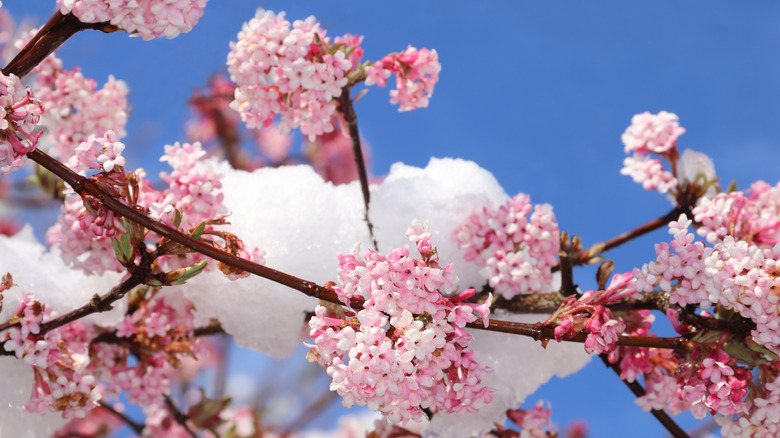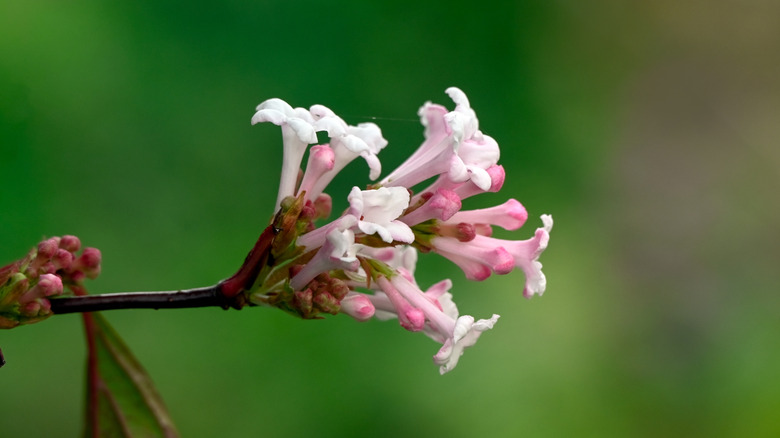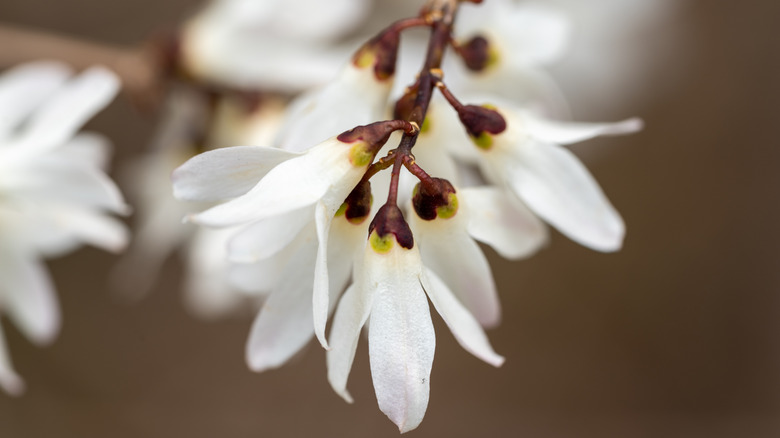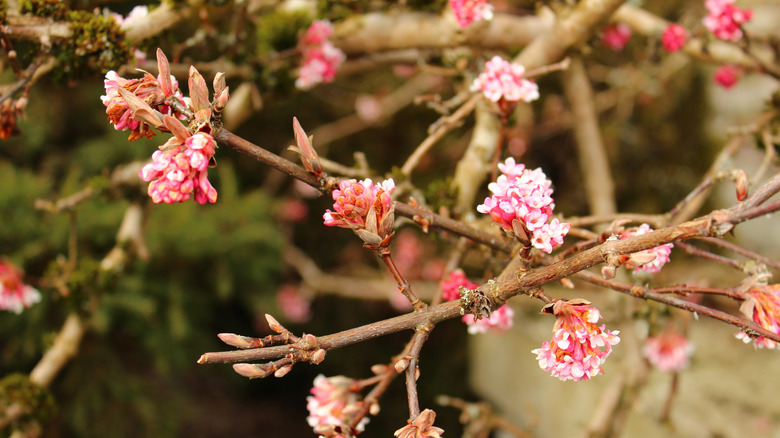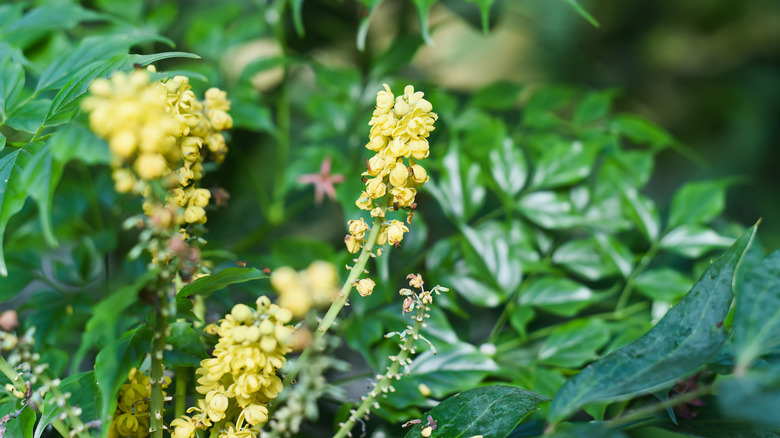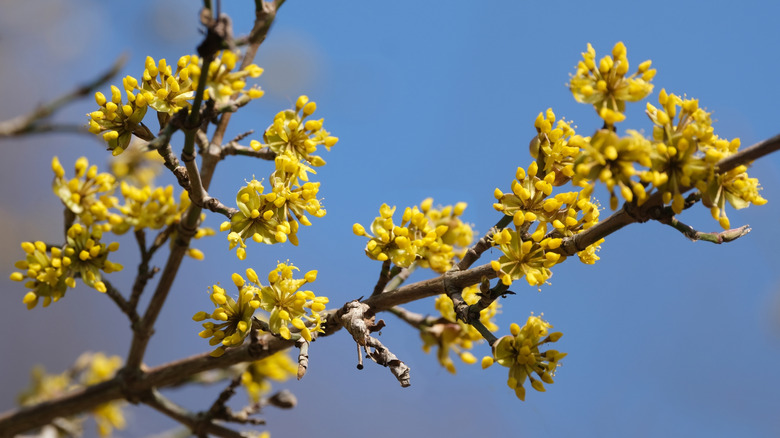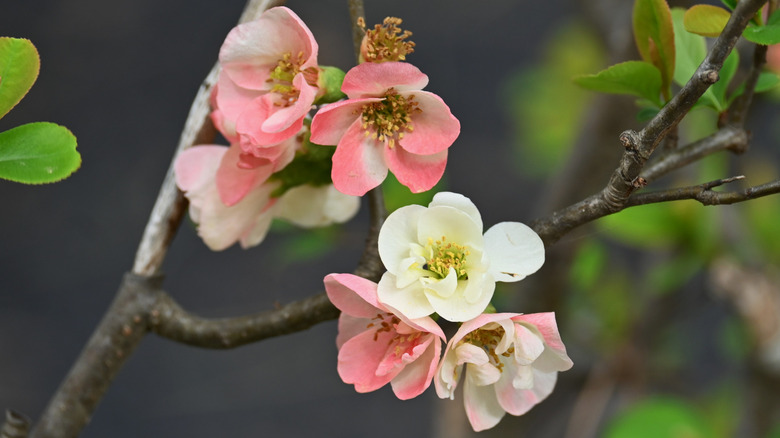10 Beautiful Blooming Shrubs That Can Survive Frost In Winter
We all have faced this. When winter arrives, a lively garden often fades into lifeless dormancy and muted colors. It makes the winter months feel visually bare and stark. But it doesn't have to be this way. Even in the coldest months, there are some hardy shrubs that explode into bloom, bringing flashes of color and life just when winter feels its harshest. Some good examples include fragrant viburnum, Ozark witch-hazel, winter daphne, bodnant viburnum, and Oregon grape. But the question is, how do you choose a blooming shrub that can survive frost in winter and still thrive in your landscape?
The first thing to consider is your USDA Plant Hardiness Zone. And you may need to double check it as your growing zone may have changed over the recent years. Secondly, you need to be aware of the growing needs, as well as care and maintenance requirements of the shrub you are going to put in your landscape. For instance, what is the soil like in your landscape. If your garden is naturally sandy, dense clay, unusually dry, or consistently wet, choose shrubs that can grow in those specific conditions. Similarly, sun exposure is another critical factor.
Most shrubs need at least six hours of sunlight every day. So, if your garden is in a shady spot, only select shrubs that can thrive in shade. Factor in bloom color, fragrance, and the evergreen or deciduous nature of the shrub as well. And finally, if you are one of the lazy green thumbs, you might want to avoid high-maintenance choices and instead look for a low-maintenance shrub you can grow in your yard.
Fragrant Viburnum
As you can probably already tell by its name, fragrant viburnum (Viburnum farreri) is an old-fashioned shrub celebrated for its intoxicatingly fragrant flowers. Suitable for USDA Plant Hardiness Zones 5 through 8, it grows best in moist, well-drained soils and produces clusters of white or pink tubular blooms. The flowering begins in November and continues through winter and lasts till early spring. Its blooms can withstand frost down to ten or twelve degrees without any significant damage.
White Forsythia
Also known as Korean abelia, white forsythia (Abeliophyllum distichum) is a compact shrub with a rounded, arching form. This makes it a perfect plant to be used as a striking specimen in the garden. It flowers in winter when only a few other plants are doing so and can be grown anywhere in zones 4 to 8. For best results, place it in well-drained soil, even though it is adaptable to a variety of conditions.
Ozark Witch Hazel
If you are looking for a winter-flowering shrub that also has attractive foliage with pretty flowers, Ozark witch hazel (Hamamelis vernalis) is the one you want. Its new leaves are bronze-red, which turn green as they mature and then put on a rich yellow and golden color in fall. Flowers are produced from January to early March; they are showy, fragrant, and range in color from golden-yellow to orange and red. You can grow it anywhere in zones 3 through 8 as long as the soil is rich, well-drained, and has adequate moisture.
Bodnant Viburnum
Bodnant viburnum (Viburnum x bodnantense) is a hybrid of two viburnums with a few cultivars, with 'Dawn' being the most popular one. If you live in zones 5 to 8, it may be a good option for your landscape. If you're in a region with mild winters, these shrubs bloom from late autumn through spring. In colder areas, they flower from late winter into spring. Flowers grow directly on bare stems and are richly fragrant. In color, they start off dark pink and turn white as they age.
Leatherleaf Mahonia
Leatherleaf mahonia (Berberis bealei) is another one of the flowers that can add color to your beds well into winter. It flowers from February to April and performs best in zones 6 to 9. Flowers are fragrant, yellow to golden in color, and attract bees and birds. Leatherleaf mahonia is considered invasive in some parts of the southeast, so check locally before planting as invasive plants can harm the local ecosystem.
Winter Daphne
Other than providing winter blooms, some flowering shrubs also provide year-round interest. Winter daphne (Daphne odora) is one of them. It is an evergreen plant with attractive dark-green, leathery leaves. Flowers appear on plants in late winter, opening in February or March. They are deep pink and white, and also have a very fragrant presence. You can plant them in your landscape if you live in zones 7 to 9, just make sure not to let the soil dry out. Also, keep in mind, all of its parts are poisonous, so keep pets and kids away.
Cornelian Cherry Dogwood
A deciduous shrub or small tree, Cornelian cherry dogwood (Cornus mas) grows well across zones 4 through 8. It performs best in well-drained and alkaline soils but also tolerates dry conditions to some extent. The flowers appear from late winter into early spring in tiny, vivid yellow clusters, lighting up its bare, leafless branches. And if you are aiming for a wildlife-friendly winter landscape, you should definitely plant it, as it attracts many insects and birds.
Winter Jasmine
Winter jasmine (Jasminum nudiflorum) is among the hardiest jasmines. And it blooms early, sometimes as early as January — a display that makes up for its unscented flowers. It grows with a trailing, vine-like habit and can handle many soil types. For best results, however, plant it in well-drained soil with plenty of sun. Some shade is okay, but it will reduce the number of flowers. If you are in zones 6 to 10, it is definitely an option worth considering for early winter floral interest.
Flowering Quince
If you live in a dry area or some place where water availability is a problem, but you still want a shrub that blooms in winter, flowering quince (Chaenomeles speciosa) is the one you should go with. Starting in late winter, its flowers appear in small clusters, their bowl-shaped petals ranging from white to scarlet red. You can grow it anywhere in zones 4 to 8 as long as you keep it out of alkaline soils. Other than that, it is easy to grow and thrives in a range of soil types.
Oregon Grape
Another hybrid on the list, Oregon grape (Berberis x hortensis), sometimes also called media mahonia, is often used as a specimen plant. This shrub brightens the garden in winter with its fragrant, showy golden-yellow flowers. Flowers appear in winter and last well into spring, and are followed by edible berries that attract bird life. You can plant it in zones 7 to 9, preferably in a sheltered location away from strong winds.
